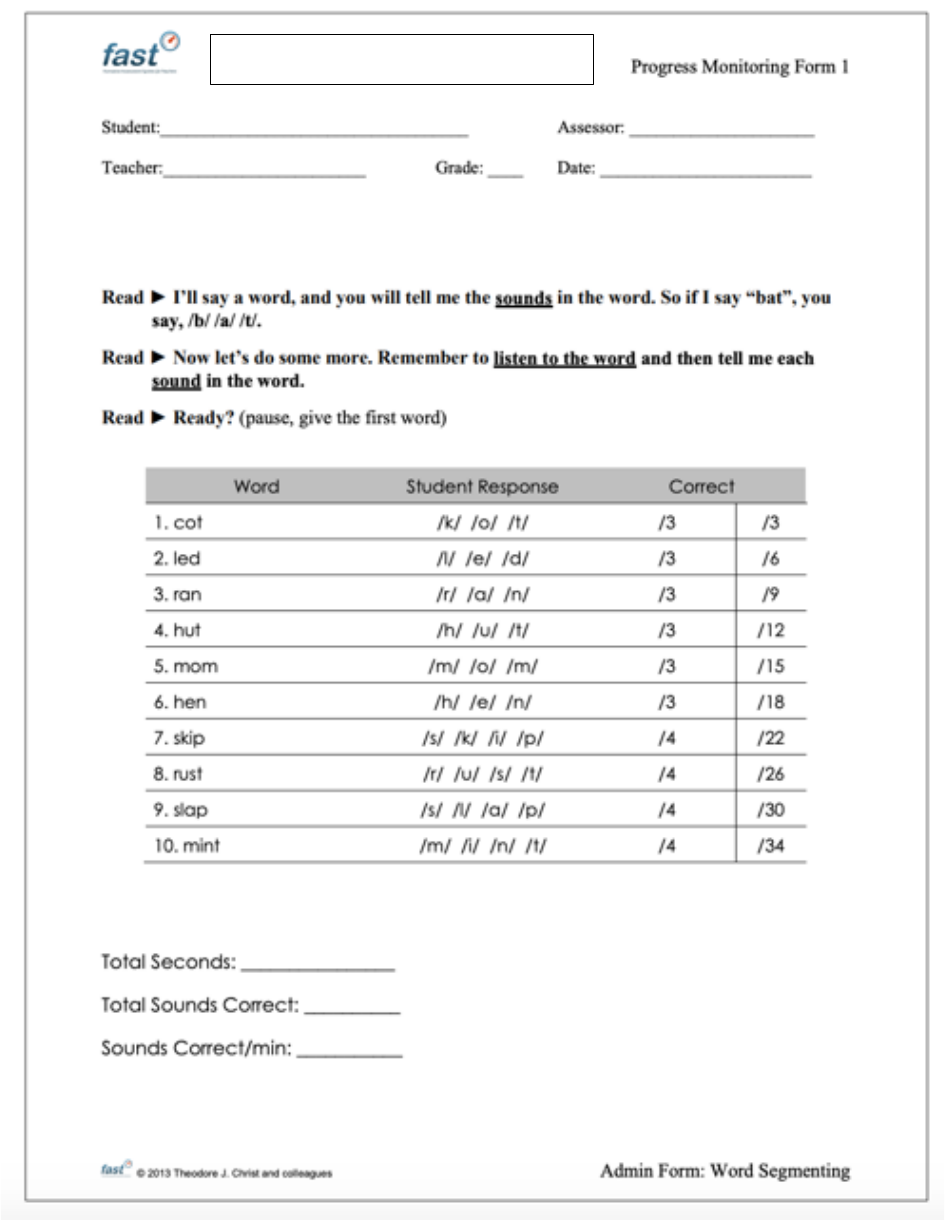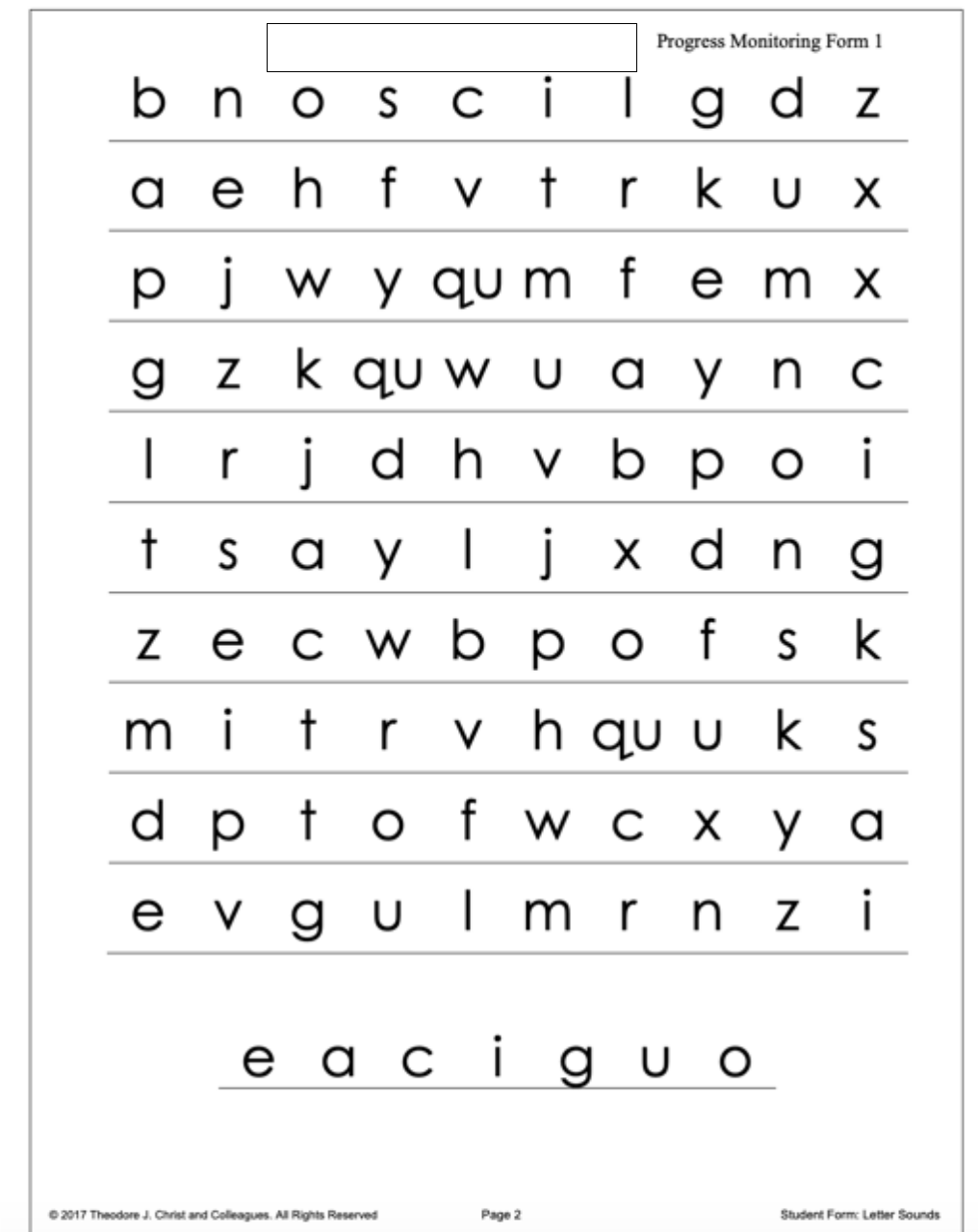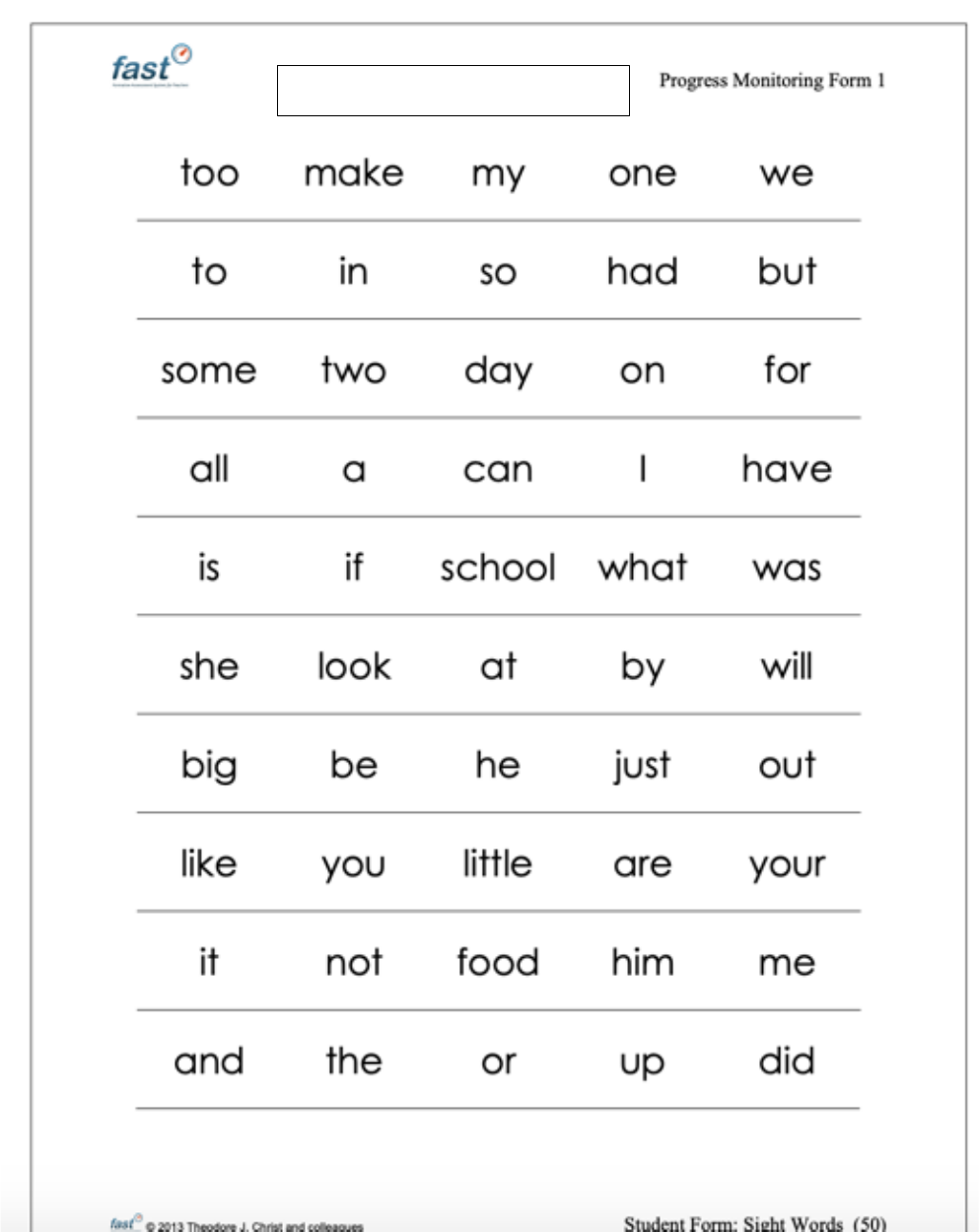
Minnesota State University Moorhead Minnesota State University Moorhead
RED: a Repository of Digital Collections RED: a Repository of Digital Collections
Dissertations, Theses, and Projects Graduate Studies
Summer 6-23-2021
Effects of Play-Based Learning on Phonemic Awareness and Effects of Play-Based Learning on Phonemic Awareness and
Phonics Skills Phonics Skills
Kristen Heidecker
Follow this and additional works at: https://red.mnstate.edu/thesis
Part of the Curriculum and Instruction Commons, Early Childhood Education Commons, and the
Elementary Education Commons
Researchers wishing to request an accessible version of this PDF may complete this form.
Recommended Citation Recommended Citation
Heidecker, Kristen, "Effects of Play-Based Learning on Phonemic Awareness and Phonics Skills" (2021).
Dissertations, Theses, and Projects
. 481.
https://red.mnstate.edu/thesis/481
This Project (696 or 796 registration) is brought to you for free and open access by the Graduate Studies at RED: a
Repository of Digital Collections. It has been accepted for inclusion in Dissertations, Theses, and Projects by an
authorized administrator of RED: a Repository of Digital Collections. For more information, please contact
Effects of Play-Based Learning on Phonemic Awareness and Phonics Skills
A Project Presented to the Graduate Faculty of Minnesota State University Moorhead
By
Kristen Heidecker
In Partial Fulfillment of the Requirements for the Degree of Master of Science in Curriculum and
Instruction
May 2021
Moorhead, Minnesota
Running Head: EFFECTS OF PLAY-BASED LEARNING
2
TABLE OF CONTENTS
LIST OF TABLES ...........................................................................................................................4
ABSTRACT .....................................................................................................................................5
DEDICATION .................................................................................................................................6
CHAPTER 1. INTRODUCTION ....................................................................................................7
Introduction ..........................................................................................................................7
Statement of the Problem .....................................................................................................8
Purpose of the Study ............................................................................................................9
Research Question(s) ...........................................................................................................9
Definition of Variables .....................................................................................................10
Significance of the Study ...................................................................................................10
Research Ethics ..................................................................................................................11
Permission and IRB Approval ...............................................................................11
Informed Consent...................................................................................................11
Limitations .............................................................................................................12
CHAPTER 2. LITERATURE REVIEW
Introduction ........................................................................................................................13
Body of the Review ...........................................................................................................13
Context ...............................................................................................................................13
Play-Based Learning .............................................................................................13
Early Literacy ........................................................................................................15
Theoretical Framework ......................................................................................................16
Conclusions ........................................................................................................................18
Running Head: EFFECTS OF PLAY-BASED LEARNING
3
CHAPTER 3. METHODS
Introduction ........................................................................................................................19
Research Question(s) .........................................................................................................19
Research Design.................................................................................................................19
Setting ................................................................................................................................20
Participants .........................................................................................................................20
Sampling ............................................................................................................................20
Instrumentation ..................................................................................................................21
Data Collection ......................................................................................................21
Data Analysis .........................................................................................................22
Research Question(s) and System Alignment........................................................22
Procedures ..........................................................................................................................22
Ethical Considerations .......................................................................................................23
CHAPTER 4 ..................................................................................................................................24
CHAPTER 5 ..................................................................................................................................29
REFERENCES ..............................................................................................................................31
APPENDIX A ................................................................................................................................35
Running Head: EFFECTS OF PLAY-BASED LEARNING
4
LIST OF TABLES
Table 1: Word Segmenting ................................................................................................26
Table 2: Letter Sounds .......................................................................................................26
Table 3: Sight Words .........................................................................................................27
Running Head: EFFECTS OF PLAY-BASED LEARNING
5
ABSTRACT
The purpose of this research was to determine the effectiveness of play-based learning on
phonemic awareness and phonics skills in kindergarten. This study aimed to determine whether
or not play-based learning materials such as letter tiles, cards, timers, and literacy-based games
were an effective way for kindergarten students to acquire skills such as segmenting, letter
sounds, and sight word recognition. A pre-assessment was given using FastBridge to determine
which skills the students were working towards mastering. Play-based learning materials were
then offered to small groups of students during our regular literacy time, and data was collected
using FastBridge after two weeks of implementation. After analyzing the data, it was determined
that play-based learning was in fact an effective way for the kindergarten students to acquire
phonemic awareness and phonics skills.
Running Head: EFFECTS OF PLAY-BASED LEARNING
6
DEDICATION
It is with a grateful heart that I dedicate this action research study to my husband Mike,
our two boys, Mason and Sam, and my family and friends. Your support, patience, and
encouragement went above and beyond anything I could have ever imagined. You all rock, I
love you.

Running Head: EFFECTS OF PLAY-BASED LEARNING
7
CHAPTER 1
INTRODUCTION
Introduction
In kindergarten classrooms today, as rigorous standards are pushed-down, teachers are
expected to foster child-development, ensure standards are met, all while trying to keep activities
developmentally appropriate. One could go as far to say that kindergarten has become what used
to be 1
st
grade. The focus has shifted from child-centered to academic-centered, and so has
pedagogy. The lens continues to zoom in on standards, assessments, and boxed curriculum,
while child development and developmentally appropriate practices have been shifting out of
focus in kindergarten. There can and should be a balance between academics and play, and also
a way to intertwine the two.
The kindergarten classroom that most adults remember from their childhood, with plenty
time for unstructured play, art and music, practicing social skills, discovery, and learning to
enjoy learning-has largely disappeared (Almon & Miller 2009). With increasing accountability
in kindergarten, teachers need to ensure that students reach certain literacy milestones before
proceeding to the subsequent grade. One result of this shift is a tension between an emphasis on
academic learning, and the use of developmentally appropriate practices, such as play (Pyle et
al., 2018). Child development has not changed, and yet, more and more academic pressure is
being placed on our youngest learners. The demands that students will face in the years to come
in school are great, therefore students need to build a solid foundation of early literacy skills. As
an early childhood educator, it is crucial to implement developmentally appropriate and engaging
Running Head: EFFECTS OF PLAY-BASED LEARNING
8
activities for students. This has led me to the question the effects of play-based learning on
phonemic awareness and phonics skills.
The research written about play-based learning suggests that there are benefits in using
this approach when teaching literacy skills. According to a research study on the play-literacy
interface in kindergarten, “while play has been shown to benefit children’s development and
learning, different play contexts, such as free play and guided play, have been found to better
support children’s development and their academic learning” (Pyle et al., 2018, p.118).
Although it is not an easy task to incorporate play-based learning, it is developmentally
appropriate, more engaging, and children deserve it.
In a study conducted by Moore (2020) it was found that play-based learning was an
effective strategy in teaching phonemic awareness and phonics when taught with an adult
facilitator. When students were part of creating the rules for a game or activity, they were more
engaged and participated more. It was found that students also learn cooperating, problem-
solving, and early literacy skills through guided play. With differing academic levels, students
were able to both teach and learn from each other while playing, and play-based learning can be
used along with current classroom routines and curriculum (Moore, 2020).
Statement of the Problem
The research problem is to measure whether or not play-based centers are an effective
way for children to learn phonemic awareness and phonics skills. The reading curriculum that
the district has adopted is not developmentally appropriate, or engaging for the kindergarten
students. Much of the curriculum involves skill and drill worksheets, and letter of the week
activities, both practices that I found in my experience teaching kindergarten to be ineffective. It
is also missing the phonemic awareness and phonics instruction piece. It is important for
Running Head: EFFECTS OF PLAY-BASED LEARNING
9
kindergarten students to develop a strong foundation of literacy skills in order to become
successful readers. Of equal importance is ensuring that the students are engaging in
developmentally appropriate activities while building these skills.
Purpose of the Study
Prior to the implementation of play-based literacy centers, a mix of a boxed curriculum
and the Daily 5 approach, a literacy framework based on 5 areas of literacy including word work,
listen to reading, work on writing, read to self, and reading to someone, were used. These
approaches were unsuccessful in keeping the students engaged. The play-based center approach
that has been slowly implemented over the course of the last year focuses on the phonemic
awareness and phonics skills that are taught to the students during whole group and mini lessons.
These skills include segmenting and blending words, letter sounds, word family recognition,
CVC words, and sight word recognition. Now that the materials and routines have been
established, it is important to know if this play-based strategy is an effective way for students to
acquire phonemic awareness and phonics skills.
After conducting the fall benchmarking assessments using FastBridge, an online
assessment system tool used for benchmarking and progress monitoring students, it was found
that 40% of the kindergarten students were not meeting proficiency in early literacy skills. The
district goal is for 80% of students to be meeting or exceeding by spring. These scores prompted
a deeper look into the effectiveness of the strategies and pedagogy being implemented in the
kindergarten classroom. The goal is to increase the student’s phonemic awareness and phonics
skills by using developmentally appropriate, engaging, play-based activities.
Research Question(s)
What are the effects of play-based learning on phonemic awareness and phonics skills?

Running Head: EFFECTS OF PLAY-BASED LEARNING
10
Definition of Variables.
The following are the variables of study:
Variable A: Early literacy skills, specifically phonemic awareness and phonics skill
acquisition will be the dependent variable in the action research study. Early literacy skills are
defined as the skill set that students need in order to transition from learning to read, to reading
to learn. The skills include vocabulary, phonics, language, and numeracy, and give students the
foundation they need in order to learn and grow (Renaissance Learning, Inc., 2020). The early
literacy skills that will be focused on in this study are word segmenting and blending, letter
sounds, CVC words, and sight word recognition.
Variable B: Teacher guided, play-based learning games in the areas of phonemic
awareness and phonics will be the independent variable. The term “teacher guided play” refers
to play activities that involve some level of adult involvement to embed or extend additional
learning opportunities within play (Pyle & Danniels, 2018). A range of terminology has been
used when referring to guided play, for example, center-based learning, or purposefully framed
play (Pyle & Danniels, 2018). Phonemic awareness and phonics play-based centers will be used
that are specific to the skill that each child is working toward mastering. For example, if the
student is not yet able to segment sounds in a word, they were given a play-based literacy center
that is specifically working on that skill. Letter tiles, play dough, picture cards, and board games
are some examples of the play-based materials the students will use.
Significance of the Study
Early childhood educators today face the challenge of trying to integrate mandated
academic standards, while keeping activities developmentally appropriate. Studies have shown
that guided play is indeed effective at allowing children to learn. “Specifically, research has
Running Head: EFFECTS OF PLAY-BASED LEARNING
11
found that children who engaged in guided play activities were more likely to learn a target piece
of information than children who engaged in free play---and in some cases, more than children
who were directly instructed” (Weisberg & Zosh, 2018, p. 27). As more focus is placed on
academics in the early childhood years, children are being robbed of play to ensure academic
benchmarks are met. A strong foundation of early literacy skills is vital, however, children need
to be given the opportunity to acquire these skills using a play-based approach. This has been an
internal struggle over the last few years, and it is why it was chosen to as the topic of research.
Research Ethics
Permission and IRB Approval. In order to conduct this study, I recieved approval from
MSUM’s Institutional Review Board (IRB) to ensure the ethical conduct of research involving
human subjects (Mills & Gay, 2019). Likewise, authorization to conduct this study was sought
from the school district where the research project took place, at a small rural school in West
Central Minnesota.
Informed Consent. Protection of human subjects participating in research was assured.
Participant minors were informed of the purpose of the study via the Informed Consent Letter. I
also read the method of assent to the participants before beginning the study. Participants were
made aware that this study was conducted as part of the researcher’s Master Degree Program and
that it was intended to benefit the researchers teaching practice. Informed consent means that the
parents of participants were fully informed of the purpose and procedures of the study for which
consent was sought, and the parents understood and agreed, in writing, to their child participating
in the study (Rothstein & Johnson, 2014). Confidentiality was protected through the use of
pseudonyms (e.g., Student 1) without the utilization of any identifying information. The choice
to participate or withdraw at any time was outlined both verbally and in writing
Running Head: EFFECTS OF PLAY-BASED LEARNING
12
Limitations.
There were two major limitations in this study, one of them being the group sample size.
The sample size is very small, which made it hard to generalize findings to a larger population.
The second limitation was the diversity, or lack thereof, in this particular group of students. The
group of students in the sample were all Caucasian, English speaking students, and only one of
which was on an IEP for cognitive restrictions. This particular group of students was able to
grasp new concepts more quickly overall than previous groups of students I have taught. The
number of students receiving tier 2 instruction, or that needed to be re-taught concepts, is less
than in previous years. This could lead to higher scores not necessarily related to the play-based
strategy. My own personal bias towards the use of play-based learning could also be a
limitation.

Running Head: EFFECTS OF PLAY-BASED LEARNING
13
CHAPTER 2
LITERATURE REVIEW
Introduction
Child development has not changed, and yet, we are asking more of our students and
using programs and tools that are not appropriate for their age. Some would argue that the
increased focus on direct instruction is developmentally inappropriate, because children are
being expected to learn academic content that may be beyond their developmental level, in a
manner that does not actively engage students (Pyle & Danniels, 2016). Early childhood
teachers face the challenge of meeting standards and goals to prepare students, while delivering
instruction in a way that is play-based so that it remains developmentally appropriate for
students.
Having a solid foundation of early literacy skills is crucial for students to build upon, and
it is possible to intertwine learning with play. Boxed curricula often rely heavily on skill and
drill worksheets, and while some students are able to learn and grow, they do not meet the
developmental needs of kindergarten children. The districts grade level goals are taken very
seriously, however, play is also a priority in the kindergarten classroom. “We owe children the
chance to be children, and we have to protect this time in their life because they cannot do it for
themselves” (Barsness, 2017, p.5). I am focusing on finding a way to get my students to achieve
our district goals in reading, while using a play-based, teacher guided play approach.
Play-Based Learning
Kindergarten was originally designed as a child-centered program, with playful context
for children to grow and develop (Froebel 1967). In 1837 when Friedrich Froebel founded
kindergarten, or what he referred to as “the children’s garden,” he introduced the idea of

Running Head: EFFECTS OF PLAY-BASED LEARNING
14
kindergarten as a place where children’s natural inclination of play could be nurtured (Pyle et al.,
2017). However,
Since the enactment of No Child Left Behind legislation, the early childhood classroom
has changed dramatically. The kindergarten classroom that was once filled with free
play, exploration, and imagination at the forefront of learning has now dissipated into a
classroom virtually devoid of play (Miller and Almon, 2009 as cited in Cavanaugh et al.,
2016, p.832).
Play has long been a topic of research and study in the field of early childhood education. Piaget
and Vygotsky both offered strong research in the area of play, including the effects of play on
language and early literacy skills (Christie & Roskos, 2011). Vygotsky emphasized the social
interactions between individuals as the sources for building literacy knowledge (Tsao, 2008).
Piaget viewed play as integral to the development of intelligence in children. His theory of play
argues that as the child matures, their environment and play should encourage further cognitive
and language development (Hamid, 2018).
Play-based learning is, essentially, to learn while at play (Danniels & Pyle, 2018).
While play has been shown to benefit children’s development and learning, different types of
play better support different types of learning and development (Pyle et al., 2017). Studies that
have been conducted on the benefits of play-based learning have typically focused on two types
of play, free play and guided play (Danniels & Pyle, 2018).
Free play, which is directed by the children themselves, typically involves imaginative
play through role-playing, creating, and following social rules such as pretending to be different
family members (Danniels & Pyle, 2018). Children’s language, cognitive, social, and emotional
development are typically nurtured during free play (Pyle et al., 2017). Guided play, however,

Running Head: EFFECTS OF PLAY-BASED LEARNING
15
has some level of adult involvement to extend additional learning within the play itself (Danniels
& Pyle, 2018). In research done by both Fisher et al. (2013) and Weisberg et al. (2013) it was
found that guided play has been found to better support children’s academic learning (Pyle et al.,
2017). There are two types of play within guided play, teacher directed and mutually directed,
and the distinction between the two comes down to who has control over the play. Teacher
directed typically involves intentionally planned games, where mutually directed allows both
students and teachers to exercise some control over the play that is taking place (Danniels &
Pyle, 2018). According to Weisberg and Zosh (2018) guided play should be scaffolded by an
adult, while allowing the child’s actions to lead them to the learning goal, and children should
maintain the locus of control.
Children are innately drawn to play. “Children in play-based kindergartens have a double
advantage over those who are denied play: they end up equally good or better at reading and
other intellectual skills, and they are more likely to become well-adjusted healthy people” (Miller
& Almon, 2009, p.8). It was also found that guided play-based opportunities serve as an
effective way for children to be engaged in the learning process (Weisberg, et al. 2013, as cited
by Cavanaugh et al., 2016). This action research focused on using guided play to acquire and
enhance phonemic awareness and phonics skills.
Early Literacy
The years from birth to five are the most important years for emergent literacy
development, although children do not usually learn to read until the ages of five or six (Elliot &
Olliff, 2008). Research has shown that the learning that occurs during kindergarten regarding
early literacy skills has a significant impact on later academic achievement (McCelland et al.,
2006). As cited by Campbell and Cook, (2008), evidence from the National Reading Panel

Running Head: EFFECTS OF PLAY-BASED LEARNING
16
(NRP, 2000) along with work done by the National Research Council committee on Preventing
Reading Difficulties in Young Children (Snow et al., 1998) found that explicit systematic phonics
instruction enhances a student’s ability to learn to read, with the strongest effects of this being in
kindergarten and first grade.
According to the National Research Panel (2002) some literacy skills are more important
than others when it comes to predicting later literacy development. Alphabetic knowledge,
phonological awareness, phonological memory, rapid automatic naming, and letter writing are
listed to have the most impact on children’s reading ability (Gozali-Lee & Mueller, 2013). In
similar findings, according to research done by Elliot and Olliff (2008), in order to be successful
in learning to read, prereaders should have knowledge of the alphabet, phonological awareness,
letter-sound correspondences, awareness of print concepts, and some experience using writing as
a form of communication.
The correlation between children’s literacy development and play has much been studied,
and as a result, has prompted more research to be done over the last few decades (Tsao, 2008).
“By engaging in joyful play activities, children also build meaning or understanding, and
develop skills closely associated with reading and writing competence” (Tsao, 2008, p.515-16).
In my experiences, children are far more engaged in play-based activities in the classroom versus
skill and drill seatwork.
Theoretical Framework
Constructivists believe that individuals learn best when they are actively constructing
new meaning of new concepts. This learner-centered approach requires the learner to take
responsibility in the learning process, while the teacher or instructor plans and designs activities
that encourage active engagement (Clark, 2018). The constructivism theory is also based on the

Running Head: EFFECTS OF PLAY-BASED LEARNING
17
idea that learners process or construct new information by relating it to existing information, or
schema (Clark, 2018).
Jean Piaget, well known for his theory of cognitive development, explained how a child
constructed a mental model of the world. He disagreed with the idea that intelligence was a
fixed trait and regarded cognitive development as a process which occurs due to biological
maturation and interaction with the environment (McLeod, 2018). He was the first psychologist
to make a systematic study of cognitive development (McLeod, 2018). Piaget believed that
children take an active role in the learning process. They often naturally act much like little
scientists as they perform experiments, make observations, and learn about the world. As
children interact with the world around them, they add new knowledge, build upon existing
knowledge, and adapt previously held ideas to accommodate new information (Cherry, 2019).
Another well-known researcher, Lev Vygotsky, whose work has become the foundation
of much research and theory in cognitive development over the past several decades, believed in
the sociocultural theory (McLeod, 2018). Vygotsky believed that social interaction helped the
learner create deeper meaning of content, and that learning occurs best when the learner is able
to be in the Zone of Proximal Development (ZPD) with support from others more knowledgeable
(Clark, 2018).
Constructivists also believe that the learner must take responsibility in the learning
process, rather than playing a passive role and expecting knowledge to sink in (Clark, 2018).
Rather than the teacher telling the child what it is they need to know, the teacher plays the role of
the facilitator, creating activities appropriate for the child’s specific needs to help build on the
skills they already have, and being there to guide the child along the way.
Running Head: EFFECTS OF PLAY-BASED LEARNING
18
Conclusions
Children learn best while at play. While there are benefits to all different forms of play,
guided play has been found to be an effective approach when working with children on
mastering targeted academic skills. Over the years, standards and academic curriculums have
been pushed down into kindergarten. While it is important to help students learn the early
literacy skills that are embedded in the academic standards, it should be done so in a
developmentally appropriate way, such as play-based learning. Using the information from the
literature, along with the action research, will help determine what the effects play-based
learning has on those essential skills in kindergarten.
The next chapter will look at the research design, participants, data collection, analysis,
alignment, and procedures of the action research study.

Running Head: EFFECTS OF PLAY-BASED LEARNING
19
CHAPTER 3
METHODOLOGY
Introduction
This study was looking at the effects of play-based learning on phonemic awareness and
phonics skills. In a time when there are more academic demands on children in kindergarten
than ever before, combining learning with play is a logical solution to fit it all in. “An increasing
societal focus on academic readiness (promulgated by the No Child Left Behind Act of 2001)
has led to a focus on structured activities that are designed to promote academic results as early
as preschool, with a corresponding decrease in playful learning” (Yogman et. al, 2018, p.2).
Research has shown for years that play is beneficial for children. I questioned whether or not my
students would acquire the phonemic awareness and phonics skills necessary to learn to read,
through play-based learning.
Research Question(s)
What are the effects of play-based learning on phonemic awareness and phonics skills in
kindergarten?
Research Design
According to Fraenkel et al. (2015), the single subject research design best fit my action
research study. This design is “most commonly used to study the changes in behavior an
individual exhibits after exposure to an intervention or treatment of some sort” (Fraenkel et. al,
2015, p. 302). Each student was given play-based materials centered on the phonemic awareness
or phonics skill they were working towards mastering, and I utilized the A-B approach for data
collection. A baseline assessment was given to each student which gave me the information I
needed to assign the play-based center according to the student’s specific needs. A range of
Running Head: EFFECTS OF PLAY-BASED LEARNING
20
skills from segmenting words, letter sounds, and sight word recognition were the skills my
students were working towards mastering. Play-based literacy games (IV) were implemented for
two weeks, and a post assessment was given to measure for growth of that specific skill. I
utilized the graph data in FastBridge to calculate the changes from start to finish for each student
in my action research study sample.
Setting
The setting of this study was a small, rural school in West Central Minnesota. It is an
agricultural community with a population of around 500. School enrollment was 282 students in
preschool-12
th
grade with all students in one building. Of the students enrolled, 95.4% were
Caucasian, 3.2% Black or African American, 3.9% American Indian, 3.5 % Hispanic or Latino,
11.3% were in special education, and 36.1% received Free and Reduced Lunch.
Participants
The population in my kindergarten classroom for the 2020-21 school year was composed
of 20 students ages five and six years old, with eleven girls (55%) and nine boys (45%). All 20
(100%) of the students were Caucasian, with one (5%) of the students on an IEP for cognitive
restrictions. Of the 20 students 6 (30 %) qualified for Free and Reduced Lunch.
Sampling
The sample for this action research study was 15 kindergarten students in my classroom.
The students were a purposive sample because they were the students assigned to my class
roster. My research of the effectiveness of play-based learning on phonemic awareness and
phonics skills was directly related to and affected all of the students in my classroom.
Running Head: EFFECTS OF PLAY-BASED LEARNING
21
Instrumentation
The instrument that I used for data collection was from FastBridge Learning (see
appendix A). FastBridge is an online assessment tool that is used for benchmarking both math
and reading in Fall, Winter, and Spring. FastBridge also offers progress monitoring tools, and
for this action research the phonemic awareness and phonics progress monitoring tools were
used (see Appendix A). The progress monitoring assessments are one-minute timed assessments
that can be given to students weekly. The students were shown the paper copy, while the teacher
was logged into FastBridge to access assessment directions, document any errors, and to stop and
start the timer. Some of the skills for progress monitoring in kindergarten included word
segmenting, letter sounds, and sight words. See appendix A for samples of the both student and
administrator forms.
Data Collection.
To assess the effectiveness of play-based learning on phonemic awareness and phonics
skills, a baseline assessment was given using FastBridge. For the baseline assessment, students
were assessed on their early literacy skills including word blending and segmenting, letter
names, letter sounds, and sight word recognition. In order to accurately assign materials, data
from the assessment (see appendix A) was used. After two weeks of implementation using play-
based learning materials to build phonemic awareness and phonics skills, the students were given
a progress monitoring assessment depending on the skill they were working towards mastering,
i.e. word segmenting, letter sounds, or sight word recognition. I then used the data produced by
FastBridge in the form of graphs to collect data on each student’s progress to be entered into an
excel form.
Running Head: EFFECTS OF PLAY-BASED LEARNING
22
Data Analysis.
Using an excel spreadsheet, each students’ baseline assessment score, along with their
progress monitoring scores were entered, and the changes made from baseline to progress
monitoring were calculated and recorded in excel as well. I then calculated the mean growth
change in each table. I utilized all of this information to determine if the play-based learning
materials were effective in phonemic awareness and phonics skill acquisition.
Procedures
The action research study took place during our regular literacy center time, between the
times of 9:00-10:35 each morning. From the data collected on the baseline assessment, I
gathered premade phonemic awareness and phonics play-based centers, letter tiles, timers, dice,
and sight word cards that were specific to the skills that each student was working on. For
example, the student working on segmenting sounds was offered a play-based literacy center
with gumball machines and gumballs with pictures for sorting the number of sounds. He was
also offered a magnetic wand, magnetic chips, and sound cards to play with. The students
working on letter sounds were offered a CVC word building game, letter cards, and a timer and
were given the choice of how to use the materials. The students working on sight words were
offered a sight word game, sight word cards, and a timer. Each group was allowed to play,
explore, and engage with the materials at their own pace and in their own way. As the students
were engaging in their play-based literacy centers, I was observing, taking notes, and available to
answer questions and aid in scaffolding my students learning. Each round of centers lasted for
15-20 minutes from set-up to clean-up. The students were assigned the play-based literacy
center for one of their three rounds of centers for that day. I was able to implement, observe, and
monitor progress for two weeks
Running Head: EFFECTS OF PLAY-BASED LEARNING
23
Ethical Considerations
An informed consent letter was sent home to the families of my students. Since my
participants were only five and six years old, not only was it important for families to be aware
of what was taking place in our classroom, I wanted to give them the opportunity to make their
own decision on whether or not their child would participate. This study was not in violation of
ethical practice, and I ensured confidentiality in my research data. I did not force any of my
students to answer questions they were not able or capable of answering. Participation in this
study presented no greater harm than that of a normal school day.
Running Head: EFFECTS OF PLAY-BASED LEARNING
24
CHAPTER 4
DATA ANALYSIS AND INTERPRETATION
What are the effects of play-based learning on phonemic awareness and phonics skills?
The purpose of my research was to determine whether or not play-based learning is
effective in acquiring phonemic awareness and phonics skills. After collecting baseline data
from the winter benchmark in FAST Bridge Learning, play-based learning materials were
gathered according to the phonemic awareness and phonics skills that each student needed
improvement on. Letter cards, CVC letter tile word games, sight word cards, dice, timers,
picture cards, magnetic wands, and magnetic chips were the materials gathered. Fifteen of my
twenty students participated in the study, four students were receiving services from a Reading
Corps tutor and/or our Title I program targeting the same skills, and one student was gone for
one week on vacation during data collection. For fidelity purposes, those students were not
included in the data. The play-based learning materials that were specific to each students’ needs
were implemented during our classroom literacy center time with small groups of students with
like needs. After two weeks, the progress monitoring tool from FastBridge Learning was used to
check for growth in word segmenting, letter sounds, and sight word recognition.
During our classroom literacy center time, play-based learning had already been
established, but not specifically to each student’s phonemic awareness or phonics skills needs.
The play-based centers were targeting the skills being taught that week (i.e. word families, with
games and materials based on that skill), and activities for building sight word acquisition. For
this study, during literacy center time, I worked with small groups using the play-based materials
targeting the specific skill that the students needed to improve on. During this time, I was able to
meet with each student at least 3 times each week. One student was working on word
Running Head: EFFECTS OF PLAY-BASED LEARNING
25
segmenting, eight students were working on letter sounds, and six students were working on
sight word recognition. Each group was presented with a set of play-based materials. The
student working on segmenting was offered picture cards, a magnetic wand, magnetic chips, and
a picture sorting game. The students working on letter sounds were offered letter sound cards, a
CVC word building game, and a sand timer. The sight word group was offered sight word cards,
a timer, and a Roll-Say-Keep sight word game. Depending on the rotation of centers, I asked
two-three students to my table to play. I would then lay the materials out on the table in front of
them, and explain what the goal was in using them, and left it up to the students to decide how
they wanted to use the materials. As the students worked together to figure out how they wanted
to use the play-based materials for that day, I simply observed and answered questions they had,
and was there to scaffold their learning. The most popular choice throughout the two-week
intervention became using the sand timer and letter sound cards or sight word cards. The
students chose to race to see who could get the most letter sounds, or the most sight words before
the sand timer ran out. Two students asked me to record the number they got on their first turn
so they could try for more on their next turn. Another popular choice was to race to beat the
timer in building CVC words. One group often chose the same Roll-Say-Keep game, but would
vary the rules from taking two cards per roll of the dice, to each person taking a card per roll.
They were in charge of making the rules and utilizing the materials in a way they wanted and
agreed upon. Some days took longer than others to come to an agreement on the activity choice
and rules. However, watching the students discuss and negotiate was incredibly eye opening.
They came up with ways to use the materials I had never thought about, for example, racing the
timer to build CVC words. They were helpful to one another if they did not know a sound or a
word, often another student in the group did know it, and would offer their help.

Running Head: EFFECTS OF PLAY-BASED LEARNING
26
RESULTS
Play-based learning to acquire specific phonemic awareness and phonics skills took place
over a two-week period of time. Each student engaged in play-based learning activities three
times each week, for a total of 6 times. At the end of the two-week period, each student was re-
assessed using the progress monitoring tool from FastBridge Learning. See Appendix A for the
progress monitoring tools used. The tables below show the baseline score in each area, the score
on the progress monitoring assessment, and the change that happened. In this study, each
student’s score showed positive growth.
Table 1
Word Segmenting
Student
B1
Baseline
0
Progress
Monitoring
9
Progress
Monitoring
+9
Note: Only one child was still working toward mastery segmenting words. This students’
baseline score of 0 was significantly lower than his peers.
Table 2
Letter Sounds
Student
B2
B3
B4
B5
G1
G3
B6
G4
Baseline
8
10
11
14
18
20
21
25
Progress
Monitoring
26
39
32
39
33
37
50
49
Change
+18
+29
+21
+25
+15
+17
+29
+24
Note: Each child working on letter sounds made gains using play-based activities. The average
change from the baseline assessment to the progress monitoring assessment date was an average
of +22.

Running Head: EFFECTS OF PLAY-BASED LEARNING
27
Table 3
Sight Words
Student
B7
G6
G7
G8
G9
G10
Baseline
9
21
7
6
8
7
Progress
Monitoring
14
32
9
22
21
14
Change
+5
+11
+2
+16
+3
+7
Note: Each child working on sight words made gains using play-based activities. The average
change from the baseline assessment to the progress monitoring assessment date was an average
of +7.
The findings were slightly unexpected, while I did expect growth to happen, most
students’ growth was higher than I anticipated it would be. The data in each area of either
phonemic awareness or phonics skills agrees with the research that I found in favor of using
play-based learning. Guided play-based opportunities serve as an effective way for children to
be engaged in the learning process (Weisberg, et al. 2013, as cited by Cavanaugh et al., 2016).
The results of the study confirm this to be true for the students I was working with this year. The
students were in control of their learning, making choices that were motivating for them to learn
the targeted skills, and appeared to be enjoying their newfound games they created. Play-based
learning had a positive impact on phonemic awareness and phonics skill acquisition for the
students in my kindergarten class.
Conclusion
When I first started to entertain the idea of play-based learning, I knew it was the right
choice developmentally for my students, but it was hard to give up that control in my classroom.
Running Head: EFFECTS OF PLAY-BASED LEARNING
28
I was also unsure that my students would utilize the materials in a way that was conducive to
learning the skills intended. After completing this study, it has become very clear that they are in
fact capable of using play-based learning materials for building phonemic awareness and phonics
skills. It was helpful for me to be there as a guide if needed, however, after the first couple of
times using the materials, they grew comfortable and confident and quickly took the lead on their
learning.
Running Head: EFFECTS OF PLAY-BASED LEARNING
29
CHAPTER 5
ACTION PLAN AND PLAN FOR SHARING
Plan for Taking Action
After studying the effects of play-based learning on phonemic awareness and phonics
skills, I plan to continue with this method of instruction as it has proven to be an effective way
for my students to acquire these important early literacy skills. In order to continue with this, I
will continue to look at the data and monitor progress so that I am able to provide my students
with the materials that best suit the skills they are working towards mastering.
I plan to start the school year next year with this strategy during center time, and allow my
students the freedom to make the rules and decisions with the materials to see where it leads
them. I plan to look at the FAST Assessment data, just as I did for this study, to determine the
play-based materials to offer my students. I found it to be beneficial that I am there to guide at
first, to explain the goals in working with the play-based materials, and also to help build their
confidence that their ideas are worth exploring.
Plan for Sharing
I plan on sharing the research, strategies I used, and the data from my action research
study at our next PLC meeting, along with my district administration. My colleagues and I often
discuss the strategies we are using, and question the effectiveness of what is we are doing. Both
kindergarten and first grade has been implementing center style, play-based learning on some
level for the last year. I am excited to share with them the research, and results from the
strategies that my students created. Using this strategy means spending less time on the boxed
curriculum that our district provides, but with the data that I have from this action research study,
I am confident in showing administration that the strategies used are in fact effective in acquiring
Running Head: EFFECTS OF PLAY-BASED LEARNING
30
the foundational literacy skills necessary for my students to succeed not only in kindergarten, but
in the grades following.

Running Head: EFFECTS OF PLAY-BASED LEARNING
31
REFERENCES
Barsness, K. (2017) Are We Doing Kindergarten All Wrong? Empowering Research for
Educators, 1 (1), 3.6. From https://openprairie.sdstate.edu/ere/vol1/iss1/2
Campbell, M. L., Helf, S., & Cooke, N. L. (2008). Effects of adding multisensory components to
a supplemental reading program on the decoding skills of treatment resisters. Education
& Treatment of Children, 31(3), 267-295. https://doi.org/10.1177/1468798409357580
Cavanaugh, D. M., Clemence, K. J., Teale, M. M., Rule, A. C., & Montgomery, S. E. (2017).
Kindergarten scores, storytelling, executive function, and motivation improved through
literacy-rich guided play. Early Childhood Education Journal, 45(6), 831-843.
doi:http://dx.doi.org.pearl.stkate.edu/10.1007/s10643-016-0832-8
Cherry, K. (2020). What Are Piaget's Four Stages of Development? Retrieved October 20, 2020,
from https://www.verywellmind.com/piagets-stages-of-cognitive-development-2795457
Christie, J., & Roskos, K. (2011). The Play-Literacy Nexus and the Importance of Evidence-
Based Techniques in the Classroom. American Journal of Play. 4(2), 204-224.
Clark, K.R. (2018). Learning Theories: Constructivism. Radiologic Technology, 90(2) 180-182.
Danniels E., Pyle A. Defining Play-based Learning. In: Tremblay RE, Boivin M, Peters RDeV,
eds. Pyle A, topic ed.Encyclopedia on Early Childhood
Development [online]. http://www.child-encyclopedia.com/play-based-
learning/according-experts/defining-play-based-learning.

Running Head: EFFECTS OF PLAY-BASED LEARNING
32
Early literacy skills - Early readers - Vocabulary and literacy. (n.d.). Retrieved November 04,
2020, from https://www.renaissance.com/solutions/early-literacy/
Elliott, E. M., & Olliff, C. B. (2008). Developmentally Appropriate Emergent Literacy Activities
for Young Children: Adapting the Early Literacy and Learning Model. Early Childhood
Education Journal, 35(6), 551–556. https://doi.org/10.1007/s10643-007-0232-1
Fraenkel, J. R., Wallen, N. E., & Hyun, H. H. (2015). How to design and evaluate research in
education. McGraw-Hill Education.
FastBridge Learning Online Assessment Tool (2020). Illuminate Education Inc.
https://www.fastbridge.org/
Gozali-Lee, E., & Mueller, D. (2013). A review and analysis conducted for Generation Next-
Wilder Foundation. Retrieved October 20, 2020, from
https://www.wilder.org/sites/default/files/imports/GenerationNext_EarlyLiteracyReport_4-
13.pdf
McClelland, M. M., Acock, A. C., & Morrison, F. J. (2006). The impact of kindergarten
learning-related skills on academic trajectories at the end of elementary school. Early
Childhood Research Quarterly, 21(4), 471–490. doi:10.1016/j.ecresq.2006.09.003
Mcleod, S. (2019). Jean Piaget's Theory and Stages of Cognitive Development. Retrieved
December 04, 2020, from https://www.simplypsychology.org/piaget.html

Running Head: EFFECTS OF PLAY-BASED LEARNING
33
Miller, E., & Almon, J. (2009). Crisis in the Kindergarten: Why Children Need to Play in
School. College Park, MD: Alliance for Childhood. Retrieved from
www.allianceforchildhood.org
Moore, Katelyn. (2020). The Effects of Play-based Learning on Early Literacy Skills in
Kindergarten. Retrieved from Sophia, the St. Catherine University repository website:
https://sophia.stkate.edu/maed/ 377.
Play-based learning: Synthesis. In: Tremblay RE, Boivin M, Peters RDeV, eds. Pyle A, topic
ed. Encyclopedia on Early Childhood Development [online]. http://www.child-
encyclopedia.com/play-based-learning/synthesis. Updated February 2018. Accessed
October 21, 2020
Pyle, A., & Danniels, E. (2017). A continuum of play-based Learning: the role of the teacher in
play-based pedagogy and the fear of hijacking play. Early Education and Development,
28(3), 274.
Pyle, A., Poliszczuk, D., & Danniels, E. (2018). The Challenges of Promoting Literacy
Integration Within a Play-Based Learning Kindergarten Program: Teacher Perspectives
and Implementation. Journal of Research in Childhood Education, 32(2), 219–233.
https://doi.org/10.1080/02568543.2017.1416006
Pyle, A., Prioletta, J., & Poliszczuk, D. (2018). The play-literacy interface in full-day
kindergarten classrooms. Early Childhood Education Journal, 46(1), 117-127.
doi:http://dx.doi.org.pearl.stkate.edu/10.1007/s10643-017-0852-z
Tsao, Y. L. (2008). Using guided play to enhance children’s conversation, creativity, and
competence in literacy. Education, 128(3), 515–520.

Running Head: EFFECTS OF PLAY-BASED LEARNING
34
Weisberg, D. S., Hirsh-Pasek, K., & Golinkoff, R. M. (2013). Guided play: Where curricular
goals meet a playful pedagogy. Mind, Brain, and Education, 7(2), 104–112.
doi:10.1111/mbe.2013.7.issue-2
Weisberg D.S., Zosh J.M. (2018) How Guided Play Promotes Early Childhood Learning. In:
Tremblay RE, Boivin M, Peters RDeV, eds. Pyle A, topic ed. Encyclopedia on Early
Childhood Development [online]. http://www.child-encyclopedia.com/play-based-
learning/according-experts/how-guided-play-promotes-early-childhood-learning.
Published February 2018. Accessed October 21, 2020.
Yogman, M., Garner, A., Hutchinson, J., Hirsh-Pasek, K., & Michnick Golinkoff, R. (2018). The
Power of Play: A Pediatric Role in Enhancing Development in Young Children. Retrieved
November 20, 2020.
https://pediatrics.aappublications.org/content/pediatrics/142/3/e20182058.full.pdf?utm_sou
rce=newsletter&utm_medium=email&utm_campaign=teaching_autistic_kids_new_play_s
kills&utm_term=2020-07-16

Running Head: EFFECTS OF PLAY-BASED LEARNING
35
Appendix A
Word Segmenting Assessment Form

Running Head: EFFECTS OF PLAY-BASED LEARNING
36
Letter Sounds Assessment Form

Running Head: EFFECTS OF PLAY-BASED LEARNING
37
Sight Words Assessment Form
